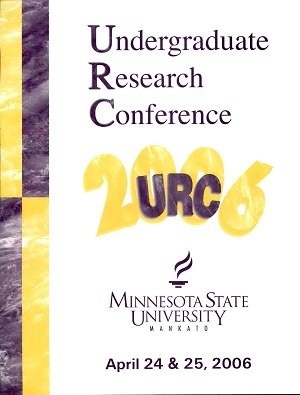Study of Poverty Distribution in the Twin Cities Metro Area Using GIS
Location
CSU 201
Start Date
25-4-2006 10:30 AM
End Date
25-4-2006 12:00 PM
Student's Major
Geography
Student's College
Social and Behavioral Sciences
Mentor's Name
Changjoo Kim
Mentor's Department
Geography
Mentor's College
Social and Behavioral Sciences
Description
Geographic Information Systems (GIS) allow easy comparison of spatial phenomenon with other variables and output the results onto maps which non-specialist audience can easily interpret and analyze. This study made an effort to understand the spatial distribution of poverty within the Twin Cities Metro Area. Poverty distribution is compared with but not limited to the selected variables such as education level, education funding, family size, family composition, infrastructure distribution, and illicit drugs. The Census 2000 family income variables have been analyzed and mapped using GIS. According to federal guidelines in 2000, the poverty threshold for a family of three was $14,150. The poverty threshold for a family of four was $17,050. Results showed the concentration of families living below federal poverty level is not evenly distributed. The correlation of this spatial distribution to that of the aforementioned variables can further be analyzed. Maps of these analyses can assist urban policy makers on development decisions and processes.
Study of Poverty Distribution in the Twin Cities Metro Area Using GIS
CSU 201
Geographic Information Systems (GIS) allow easy comparison of spatial phenomenon with other variables and output the results onto maps which non-specialist audience can easily interpret and analyze. This study made an effort to understand the spatial distribution of poverty within the Twin Cities Metro Area. Poverty distribution is compared with but not limited to the selected variables such as education level, education funding, family size, family composition, infrastructure distribution, and illicit drugs. The Census 2000 family income variables have been analyzed and mapped using GIS. According to federal guidelines in 2000, the poverty threshold for a family of three was $14,150. The poverty threshold for a family of four was $17,050. Results showed the concentration of families living below federal poverty level is not evenly distributed. The correlation of this spatial distribution to that of the aforementioned variables can further be analyzed. Maps of these analyses can assist urban policy makers on development decisions and processes.
Recommended Citation
Moua, Je. "Study of Poverty Distribution in the Twin Cities Metro Area Using GIS." Undergraduate Research Symposium, Mankato, MN, April 25, 2006.
https://cornerstone.lib.mnsu.edu/urs/2006/oral-session-M/2



